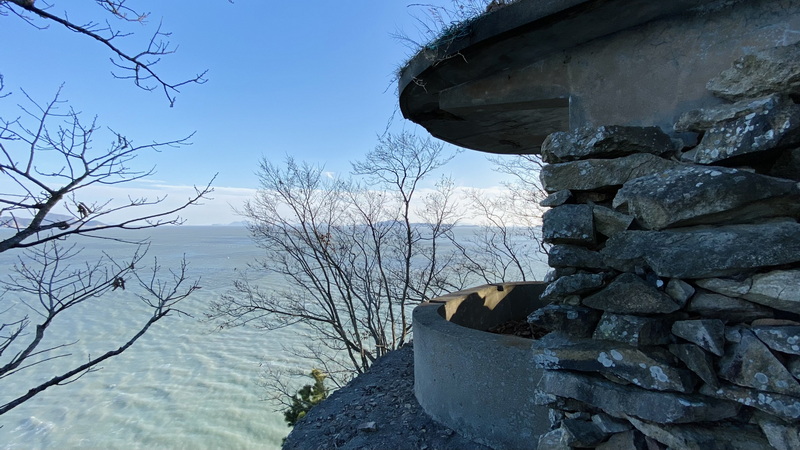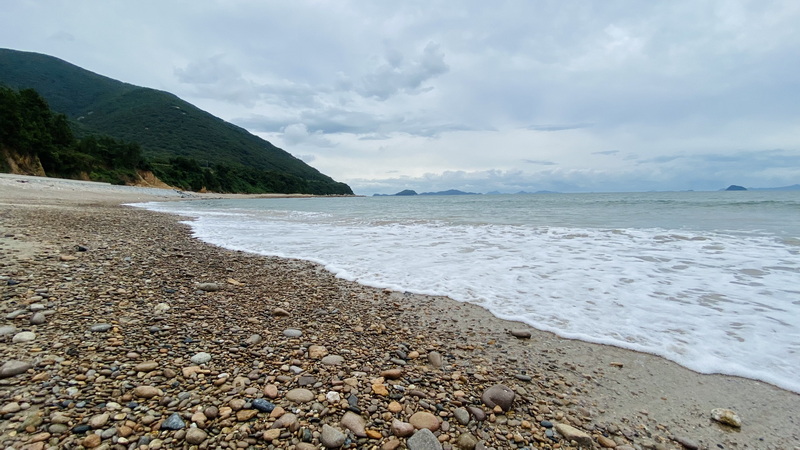Don’t Read This Article: It’s About Geogeum-do
By Isaiah Winters
For years, I’ve tried in vain to find good beaches in Jeollanam-do. Jealous of other provinces’ many excellent, swimmable beaches, I’ve invested an unhealthy amount of time and energy into finding the best the southwest has to offer, only to conclude that the local coastline is nothing but slimy mudflats subject to dramatic shifts in tide. It’s officially time to stick a fork in it – all the beaches here suck. Go to Jeju Island, the southeast, and the east coast if you want proper beaches. Whatever you do, avoid this region as much as possible. That’s it for this article. The end.
(Are they gone? Good. Now let’s talk about Geogeum-do.)

There’s an island in Jeollanam-do, just off the southwest coast of Goheung, that I love so much I almost bought a second home there despite not having a first. The idea was simple: Buy land near the coast and build a microhome on it because it’s an amazing place to summer, winter, and spend weekends. Never mind the fact that I didn’t have a home in Gwangju – the housing quality is garbage and overpriced in the city anyway, so I might as well buy land I actually want and can afford over a couple dozen extortionate pyeong in the sky.
This thinking sparked an onrush of research and multiple visits to the island, including lots of back and forth with realtors in the area. But every time I’d get close to pulling the trigger, reality – the bane of my existence – kept rearing its ugly head. Over time, reality’s little, logical slaps in the face started to add up. “Man, driving two and a half hours one way sure is a drag, especially with fuel prices on the rise.” “Dang, the land parcels for sale are either massive or minute.” “Crap, some saboteur owns the two-square-meter ramp to the property, leaving buyers at his mercy.” Lather, rinse, and repeat these and other concerns for eight hopeful months.

Eventually, the steady trickle of reality water torture won out, so now I’m stuck in the city with lots of pictures detailing why the island is so special to me. I’ll start with the beaches I love most: Ikgeum Beach (익금해수욕장), Geumjang Beach (금장해수욕장), and Ocheon Pebble Beach (오천몽돌해변). Broad and wide, Ikgeum Beach consists of fine, light-colored sand that makes it a miniature version of Wando’s most famous beach. However, it’s not at all miniature, and it’s better in that it’s comparatively bereft of people. This is where I got closest to buying land before ultimately backing out. Geumjang Beach, which is darker with a mixture of sand and pebbles, is my personal favorite on the island. I was excited to buy one of the houses in the village until the owner suddenly took it off the market, leaving me crushed.
Ocheon Pebble Beach is a tragic natural wonder that deserves a paragraph all its own. In terms of beauty, it’s right up there with the country’s most stunning pebble beaches. The stones are a light, sandy color that pairs beautifully with the blue of the sea – the only problem is the lowest point of the shoreline where the water meets the pebbles. There an unfortunate type of algae coats the rocks in a greenish-black slime that stinks enough to make swimming unthinkable. I can’t prove it, but I suspect a few of the food processing businesses right above the beach are to blame. One of their main functions is seaweed processing, and there’s an ungodly conduit channeling green and red runoff from them right out into the water. It’s maybe the most disappointing blight I’ve ever seen at an otherwise phenomenal pebble beach.

As you drive further towards the eastern edge of Geogeum-do, the cliffs get steeper, development becomes sparser, and things turn more industrial. Eventually, the road ends at a lonely little land bridge leading to an even lonelier island. There a squatter with a penchant for farming planted a few yappy dogs behind a makeshift fence, thinking their incessant barking would keep most visitors away. I approached carefully and, upon seeing the dogs were all tied up, made my way onto the lonely island to check out something I’d seen earlier on the map: an old military installation. After a short hike punctuated by snarls and howls, I made it to what looked like a sizeable bunker ringed by concrete pillbox lookouts. To my surprise, the bunker had several inhabitants who emerged from the underground upon hearing me: a family of black goats. Thank God they’d also been fenced in by the island’s squatter. The concrete lookouts were a lot of fun to explore and came with impressive views overlooking the sea. I was in heaven that day.

On my most recent visit to Geogeum-do, I decided to do the one thing I’d long neglected: hike one of its many lengthy ridges. There’s one ridge that’s particularly impressive, as it rings a huge basin that supplies the island’s largest reservoir. Although the ridge maxes out at just 600 meters, so much of it is at or near that elevation that you could walk for hours and never go below 400 meters. Once you reach the ridge, the strolling is easy and the views leave you thinking you’re somewhere far more touristic. I went about two hours before sunset and caught views of a shimmering blue sea on one side and island-strewn channels splashed with sunset yellows on the other. My wife and I then grabbed a beer from the local village and spent the blue hour in our beach chairs at Ikgeum. This we followed with a seafood dinner at Nokdong, the port city just north of Geogeum-do on the way back to Gwangju. It was one of those rare days when you realize the things you’re doing will become a great memory even as they’re unfolding – minus the two-and-a-half-hour drive back to reality.
The Author
Forged in the dairy fog and cow farts of Chino, California, Isaiah Winters left for Gwangju in 2010 following the great recession. He particularly likes sinking huge amounts of time and effort into fruitless endeavors, which is why he’s languidly writing a book about his regional finds in the hopes of becoming a future failed author. You can find much of his photography on Instagram @d.p.r.kwangju.







